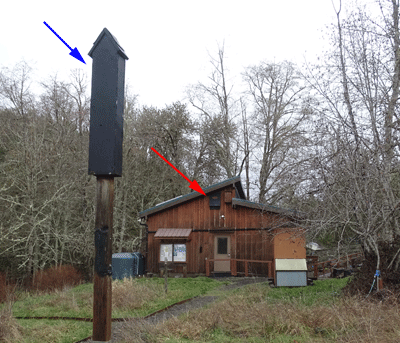Hesthavn Nature Center and Sanctuary
Although the area is small, Hesthavn boasts an amazing diversity of life. All four seasons bring changes – the birds are bursting with song in spring and early wildflowers bloom. Summer brings flowers, seeds, and berries which feed hungry birds and other animals, plus welcome shade from hot temperatures. Fall ushers in falling leaves and migrating geese. Winter’s rain showers renew the water table and fill the water storage tank.
History
In 1993 Alan and Helen Berg, both former mayors of Corvallis, donated their 5.67-acre horse pasture just west of Corvallis to the Audubon Society of Corvallis (now MWBA). One of the conditions of the donation was that the Hesthavn name, which means “horse harbor” in Norwegian, remain the same. The small barn was renovated and named Hesthavn Nature Center. The heated facility makes it possible to provide nature classes for schoolchildren, groups, and the general public year-round. It also functions as a museum for wildlife specimens, display area for exhibits, library, and meeting place. Oak Creek, a tributary of the Marys River, flows through the Hesthavn grounds on its way to the Marys River.
Hesthavn connects the community with wildlife in their native habitat of oak savannah and Oak Creek riparian forest. The property includes two short trails, native plant garden, and bird feeders. Two picnic tables await casual lunches! No water is available at the Center, but a composting toilet is onsite.
A rainwater catchment system collects rainfall runoff for later use to water the plants. The collection tank has a solar-powered pump that needs protection from freezing so it is partly underground. Crescent Valley High School volunteers helped bury the pipelines, then leveled and positioned the tank.
Volunteer to help Connect visitors to Nature!
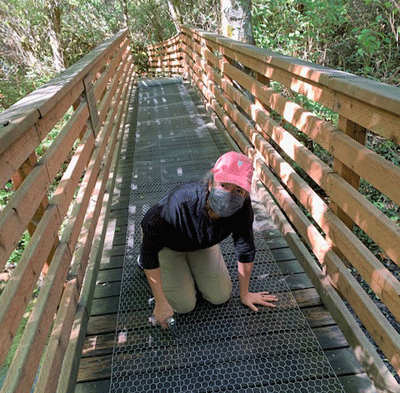
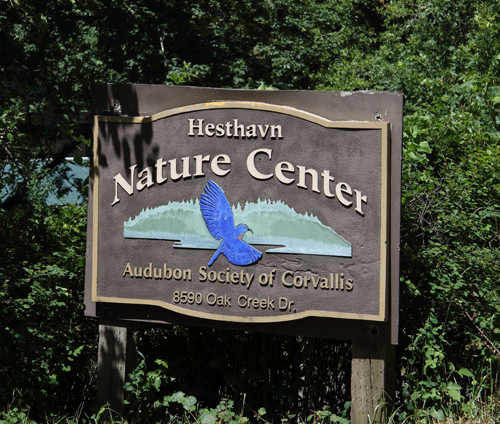
This hidden jewel of a Nature Center is located in northwest Corvallis, just 10 minutes from downtown. It is a lovely spot all year and is free to the public. It is accessible from dawn to dusk all year. The on-site parking lot is private and is limited to people visiting Hesthavn only.
Click for Google Map
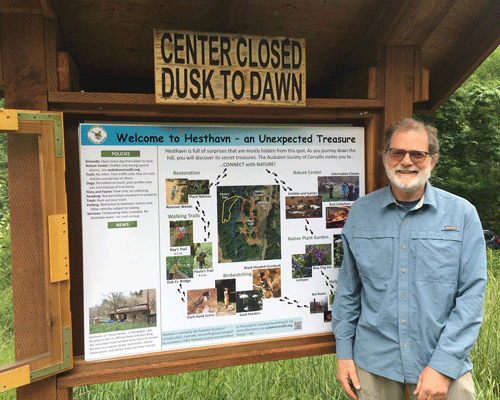
Hesthavn Manager Ray Drapek finishes installing the kiosk sign in the parking lot. It welcomes all visitors, describes the different things to do, and outlines the policies. A second kiosk sign outside the Nature Center highlights restoration, conservation, and green solution projects. Both signs are also posted Versions in Spanish.
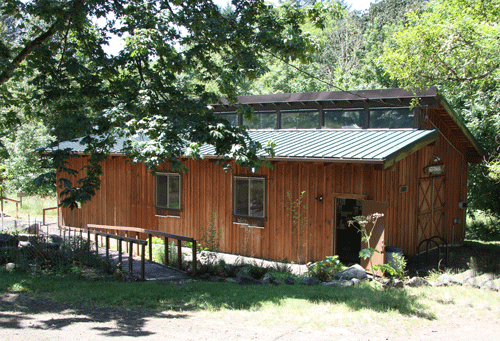
The Nature Center looks compact, but it has a surprising number of exhibits, nature books, and even a collection of taxidermied birds inside. There is room enough for a school class when the weather is unpleasant, and room to explore outside when the weather is fine. A solar composting toilet is on site and ready to meet your needs naturally.
Visiting Hours
The two trails, native plant garden, picnic tables, and bird feeders are accessible from dawn to dusk every day of the year. Hesthavn Nature Center is staffed only during scheduled events, and a notice of future events will be posted on the MWBA’s website homepage. The building is ideal for school classes or for group meetings which have been scheduled a month in advance. The Center is wheelchair accessible, and admission is always free! No drinkable water is available on site, so please bring your own. Also pack out your trash to leave no trace!
Location and Directions
Hesthavn is located at 8590 NW Oak Creek Drive in NW Corvallis. Take Harrison west from downtown Corvallis; after you cross 53rd, it becomes Oak Creek Drive. Pass Bald Hill farm and follow the brown signs for ‘Nature Center.’ Hesthavn will be on your left shortly before the end of Oak Creek Dr.
Aerial view map
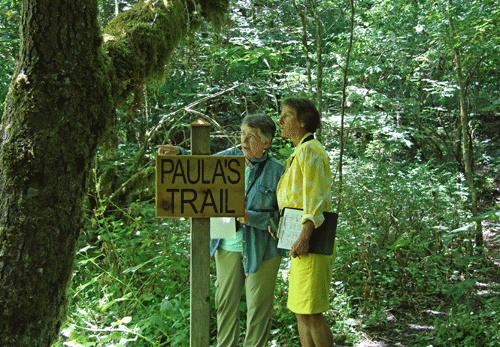
The two trails at Hesthavn are both fairly short, but Paula’s Trail (0.1 mile) has a short uphill section while Ray’s Trail (0.2 miles) is pretty flat. Enjoy the cool shade in the riparian habitat along Oak Creek as summer temperatures soar. Wildflowers bloom at different times, and the species may be quite different every time you visit!

Plants in the native garden are labeled for easy identification. Use them as a guide for creating your own native garden at home. You are welcome to borrow a copy of the Native Garden Plant List from the box on the side of the barn. Be sure to return the guide for other visitors to use.
Museum and Exhibits
MWBA’s museum contains a collection of preserved birds that help to demonstrate the striking adaptations that individual species have made to co-exist with other birds in the same area. It is also easy to compare beaks, wings, feet, and other attributes. All specimens were donated after they died from injuries. Exhibits include a touch table with samples of animal fur and bones; interactive games; bat, butterfly, and bird houses; and informative posters. There is a collection of field guides to native animals and other books that can be borrowed. Small children are delighted by storybooks and the squeaky, stuffed bird toys.
Explore the Trails
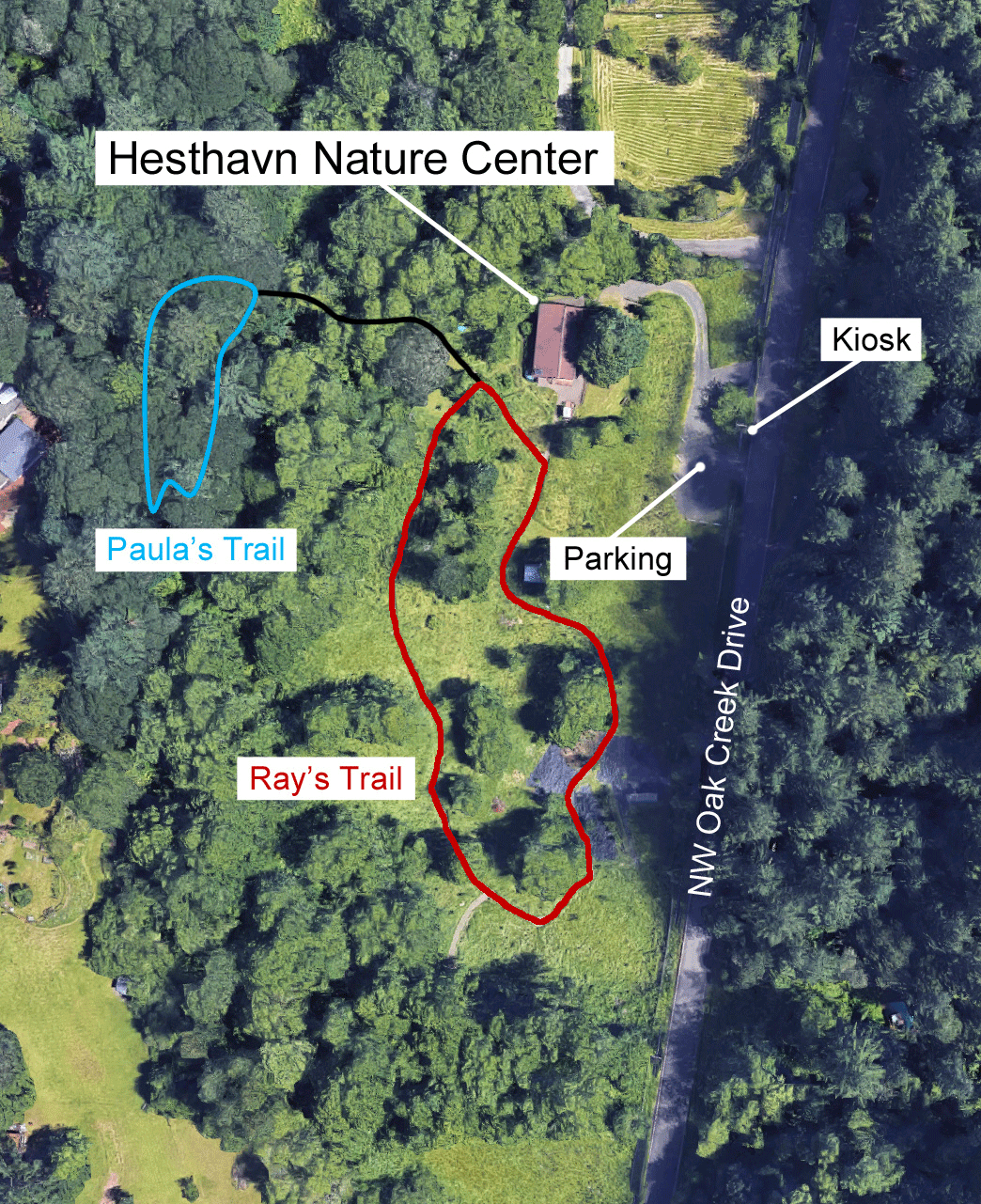
Explore the Hesthavn habitats by walking the two short trails. Ray’s Trail is a 0.2 miles (320 m) loop that is easy to walk with a gravel surface. Sign posts along the way highlight the surprising number of habitats in such a small area. Paula’s Trail is a 0.1 mile (160 m) loop that explores the Oak Creek creekside habitat. This trail has a dirt surface and a short up and downhill stretch.
Ray’s Trail brochure Ray’s Trail Map
The Bluebird Trail Exhibit
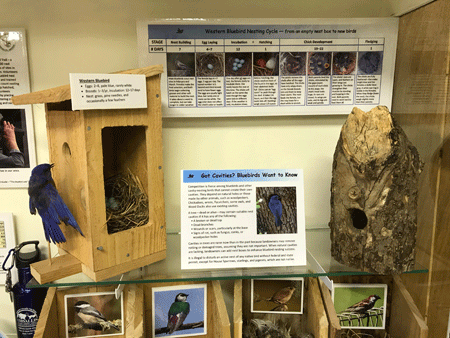
Bird Collection and Bones & Pelts
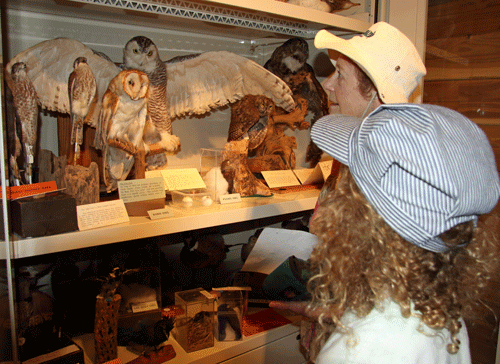
The museum has an extensive of preserved birds that were donated after they died. Raptors, ducks, woodpeckers, songbirds, hummingbirds, and more were arranged in natural positions.
Monitoring and Banding Bluebirds
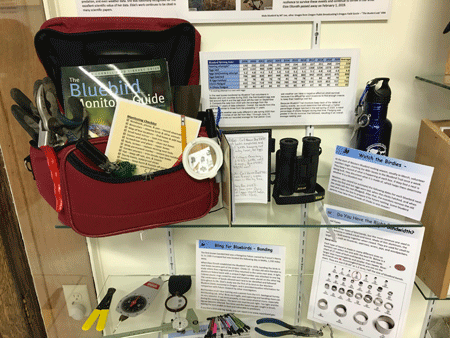
Nest Boxes, Skulls, Bones, Shells, and More

If you are very observant and patient, you may find remnants of animals while you are hiking – antlers, skulls, turtle carapaces, bird eggs and nests, and more! Hesthavn is a preserve, so please do not collect anything while visiting. See our collection in the Nature Center.
Nature Programs
MWBA volunteers and local naturalists invite nature explorers and their families to learn about fascinating topics at specially scheduled events. The theme may be Compare Bird and Bat Wings, Food Webs in Corvallis, or What are Flycatchers made of? (Flies, of course!). Special Sunday events are often offered during the school year, which are fun and free activities for the whole family.

Education Team members enjoy a fold-out picture book from the Hesthavn library and decide to include it in a new nature program.
Volunteer to help visitors and students Connect with Nature!
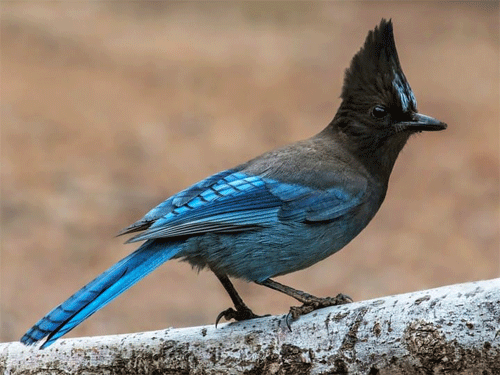
Steller’s Jays are one of many birds you can spot at Hesthavn, attracted by the seed and suet feeders. They live in conifer forests, unlike Scrub Jays which prefer scrubland. Both species are very vocal!
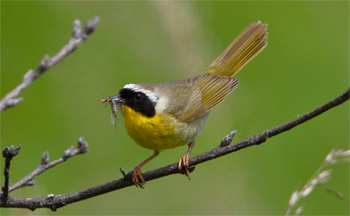
You will need to scan the brush around Hesthavn to see Common Yellowthroats, which are rarely found at the seed feeders. Females are browner and don’t have the black mask. Yellowthroats are also vocal birds – listen for their witchety-witchety-witchety songs.
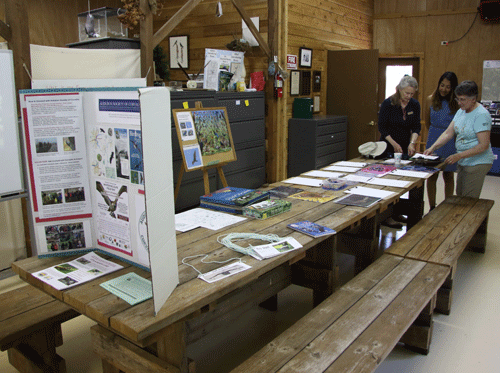
Preparations for a special Father’s Day program about Food Webs use the full table surfaces.

Chintimini Wildlife Center bird handlers present a raptor rehabilitation program starring birds that were injured and cannot be released back to the wild.
Restoration
Hesthavn restoration is slowly returning the former pastureland to the native habitats that were once here, with the long-term goal of full native restoration. Wildlife readily colonize restored sites, and population increases can be documented over time. Restoration also increases the diversity of plants, insects, amphibians, and reptiles which are essential to a fully functioning ecosystem. Did you see the circle fences? They are temporary to keep deer from browsing on young plants in the meadow until they get established and grow large enough to tolerate some nibbling.
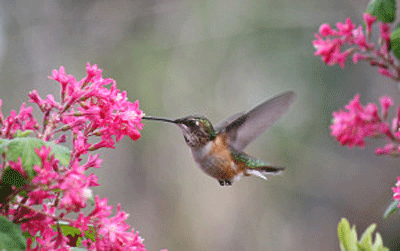
Red-flowering currants bloom in early spring, enticing Rufous Hummingbirds and other nectar sippers.

This colorful native is Oregon Sunshine (Eriophyllum lanatum Forbes), which flowers in May and June. The leaves have soft hairs on the back and are blue-gray on the upper side. It requires little care and grows prolifically. This is an excellent pollinator plant, attracting hummingbirds, beetles, flies, honeybees, moths, and butterflies.
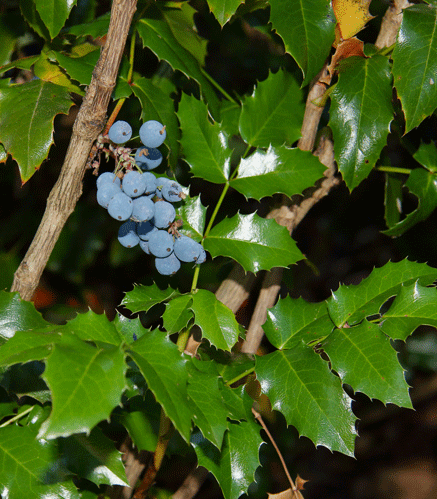
Oregon grape, an evergreen shrub that is native to much of the Pacific Coast, was named the official state flower of Oregon in 1899. Bright yellow flowers bloom in spring, attracting native and honeybees, and dark blue berries ripen in late summer and are consumed by deer and birds. The berry is edible but seedy and somewhat bitter.
Conservation
Part of MWBA’s mission is to conserve and restore wildlife and their habitats. Providing native habitats allows more species to populate an area, and diversity is key to survival.
MWBA is helping birds and other species to survive in a changing world. Invasive plants are fiercely attacked by volunteer crews, and native plants are added to the landscape. The large water tank stores rainwater, which is used to irrigate plants in late spring and summer. Native plants provide important food and habitat for native animals, such as mason bees, butterflies, moths, other insects, as well as deer and rodents.
Bats are mostly nocturnal so are not commonly seen. If roosting spots are not available, installing a bat box can mimic the natural habitat, providing a safe, dry refuge for solitary or communal colonies. Hesthavn hosts two bat roosting boxes – a rocket box, narrow and tall and located near the tool shop, and a traditional flat box mounted on the south side of the Nature Center.
